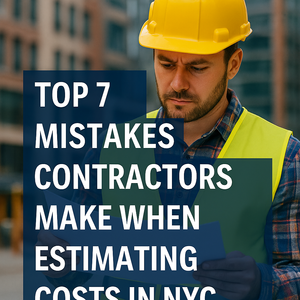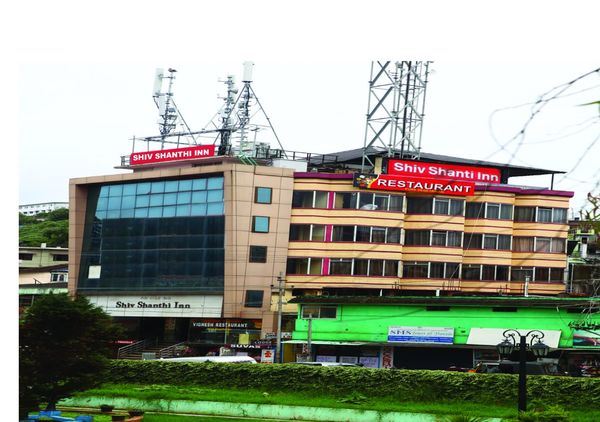Top-7-mistakes-contractors-make-estimating-costs-nyc
 Steve Davis
29 May, 2025
6 mins read
24
Steve Davis
29 May, 2025
6 mins read
24

Accurately estimating construction costs in New York City is both an art and a science. With its dense regulatory environment, fluctuating material prices, and high labor costs, NYC presents unique challenges that can derail even the most seasoned contractor’s budget. Whether you're working on residential renovations or large-scale commercial developments, avoiding common estimation errors is key to staying profitable. Here are the top 7 mistakes contractors make when estimating costs in NYC—and how to avoid them.
1. Ignoring Local Regulations and Permitting Costs
One of the most frequent mistakes in New York construction estimating services is underestimating or completely overlooking the cost of permits and regulatory compliance. NYC has some of the most stringent building codes in the country. Failing to account for the cost of filing fees, inspections, and code-compliant upgrades can severely impact your bottom line.
Tip: Always consult with a local DOB expert and factor in extra time and budget for permit approvals.
2. Underestimating Labor Costs
Labor in New York City is expensive—and often unionized. Contractors new to the area often use generic labor rates that don’t reflect prevailing wages or union agreements, leading to underestimated bids and lost profits.
Tip: Use up-to-date labor rate databases specific to NYC and verify wage requirements for union vs. non-union jobs.
3. Not Using Specialized Estimating Services
Trying to handle complex cost estimates in-house without the right expertise or tools can lead to inaccuracies. Utilizing professional New York construction estimating services ensures that your estimates reflect the latest market rates and include all relevant line items.
Tip: Outsourcing to reputable estimating firms can save both time and money while improving bid accuracy.
4. Misjudging Site Conditions
In a city where every square foot counts, overlooking site-specific challenges like limited access, old infrastructure, or environmental hazards is a costly oversight. These factors can significantly increase project timelines and costs.
Tip: Conduct thorough site visits and collaborate with engineers or surveyors to fully understand the physical constraints.
5. Overlooking Change Orders
Contractors frequently make the mistake of not budgeting for potential change orders, which are almost inevitable in NYC projects due to evolving client needs or unforeseen conditions.
Tip: Include a contingency (typically 5-10%) in your estimates to account for scope changes or surprises during construction.
6. Improper Subcontractor Coordination
Subcontractors play a major role in NYC construction, yet many contractors fail to properly vet or coordinate with them during the estimating phase. Inaccurate or delayed bids from subs can derail your entire proposal.
Tip: Build strong relationships with reliable subcontractors and get their input early in the bidding process.
7. Neglecting Detailed MEP Estimations
Mechanical, electrical, and plumbing (MEP) systems can constitute a significant portion of a project’s budget. Failing to understand how to estimate plumbing works accurately, for instance, can lead to underbidding or disputes during execution.
Tip: Use detailed takeoffs, historical data, and consult with licensed professionals to refine your MEP estimates. Knowing how to estimate plumbing works accurately requires consideration of pipe routing, water pressure requirements, fixture counts, and local code compliance.
Final Thoughts
Construction in NYC demands more than a general knowledge of estimating—it requires localized expertise, attention to detail, and strategic planning. Avoiding these seven common mistakes will help you deliver more competitive and realistic bids while safeguarding your profit margins. Whether you’re new to the city or a seasoned pro, leveraging expert New York construction estimating services and sharpening your estimation processes can make all the difference.
Written By:
Steve Davis



Hotels at your convenience
Now choose your stay according to your preference. From finding a place for your dream destination or a mere weekend getaway to business accommodations or brief stay, we have got you covered. Explore hotels as per your mood.





